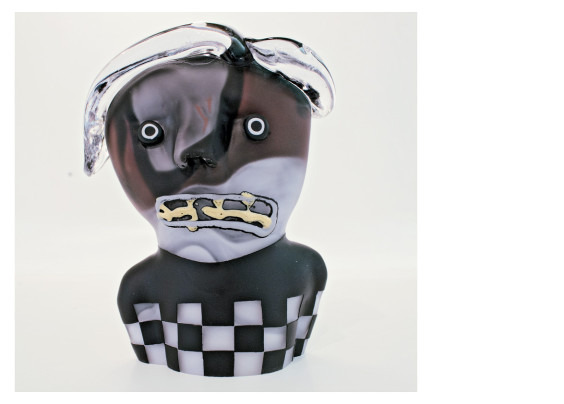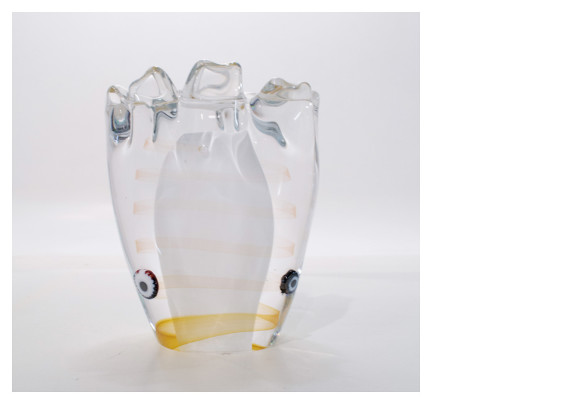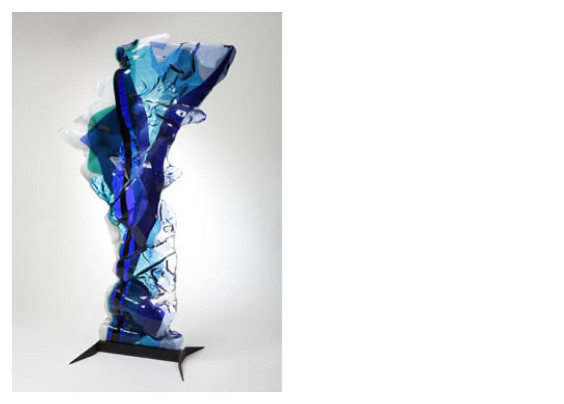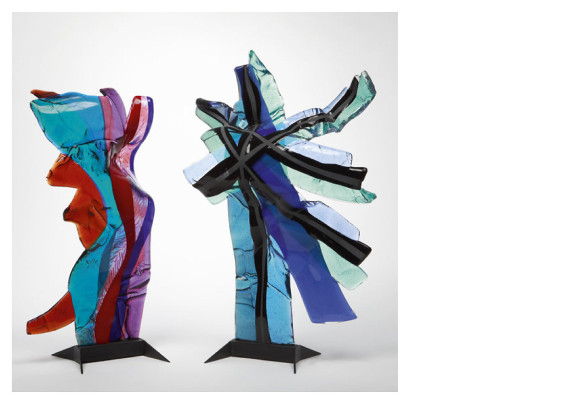








Louis en Maurice La Rooy
Louis La Rooy
After his studies at the Rietveld Academy and the National Academy in Amsterdam, Louis la Rooy began his career as a decorator for a company specialised in window-display materials in 1966. When this company also started making glass decorations, Louis became so fascinated by the material, that he decided to increase his working knowledge of it. For this reason, he started working for Glasindustrie Van Tetterode Amsterdam in 1966. Louis spent the following year almost entirely in the United States to teach and promote the technique of application in cooperation with the Willet Stained Glass Company. In 1968, he returned to the Netherlands and since then he has designed and realised many works of art at Van Tetterode. Apart from making his own projects, Louis is also commissioned to realise the glass designs of Dutch artists among whom Corneille, Appel and Wolkers. In 1981, through application, he created an enormous window designed by Rufino Tamayo, a project which allowed him to stay in Mexico for nearly a year. In addition, Louis realised many glass projects for both the Dutch government as for private customers. Furthermore, he participated in a number of co-exhibitions in the Netherlands and abroad.
At the moment, Louis produces at the Van Tetterode glass studio in Amsterdam. This well-equipped studio is divided into a flat-glass, hot-glass and metal section where numerous projects are realised by using techniques such as application, sandcasting, glassblowing, fusion, sandblasting and etching.
Maurice La Rooy
Glas is koppig. Maar de sterke jonge hengst Maurice la Rooy is ook koppig.
Deze overeenkomst speelt bij hem op meerder terrein. Maar wat duidelijk blijkt uit de filosofie van Maurice is dat zijn gedachten ten aanzien van de glaskunst ook wel controversieel is. Maurice la Rooy maakt vooral illustratief werk en als toekomstgerichte kunstenaar werkt hij drie-dimensionaal. Zijn sculpturen vertellen altijd een verhaal. Maar dan wel in één beeld. Er is geen ‘voor’ in het verhaal en er is geen ‘na’. Er is alleen dit beeld dat alles vertelt. In zijn steeds terugkomende tweespraak met het glas komt zijn koppigheid duidelijk naar voren en dwingt hij het glas dat te doen wat hij wil. Hij is dan nog heer en meester over de materie, maar zodra het glas uit de afkoeloven komt, is het niet meer ‘van mij’. Maurice neemt dan duidelijk afscheid van zijn schepping en stuurt het de wereld in. De ziel die toen net tot leven kwam is bij de ‘geboorte’ van het glas gestorven, hij geeft het weg, doet er afstand van. Maar Maurice is ook heel tegenstrijdig en tegelijk zoekt hij de uitersten op. Dit is terug te zien in veel van zijn werk. Ronde vormen gecombineerd met hoeken; licht en donker; vriendelijke figuren, maar wel met dichtgenaaide mond. Maurice legt het glas het zwijgen op!! Hier en daar missen zijn creaties een oog alsof niet alles gezien mag worden of alsof het oog op reis is. Het gesprek dat Maurice voerde met zijn werk is nog steeds zichtbaar voor de kijker en zet zich voort wanneer gekeken wordt. Zo ontstaat bij de toeschouwer het ‘voor’ en het ‘na’ dat eerst afwezig was.
Een boeiende jonge kunstenaar die, ondanks zijn jeugd, veel heeft nagedacht. Dat betekent veel voor de toekomst.